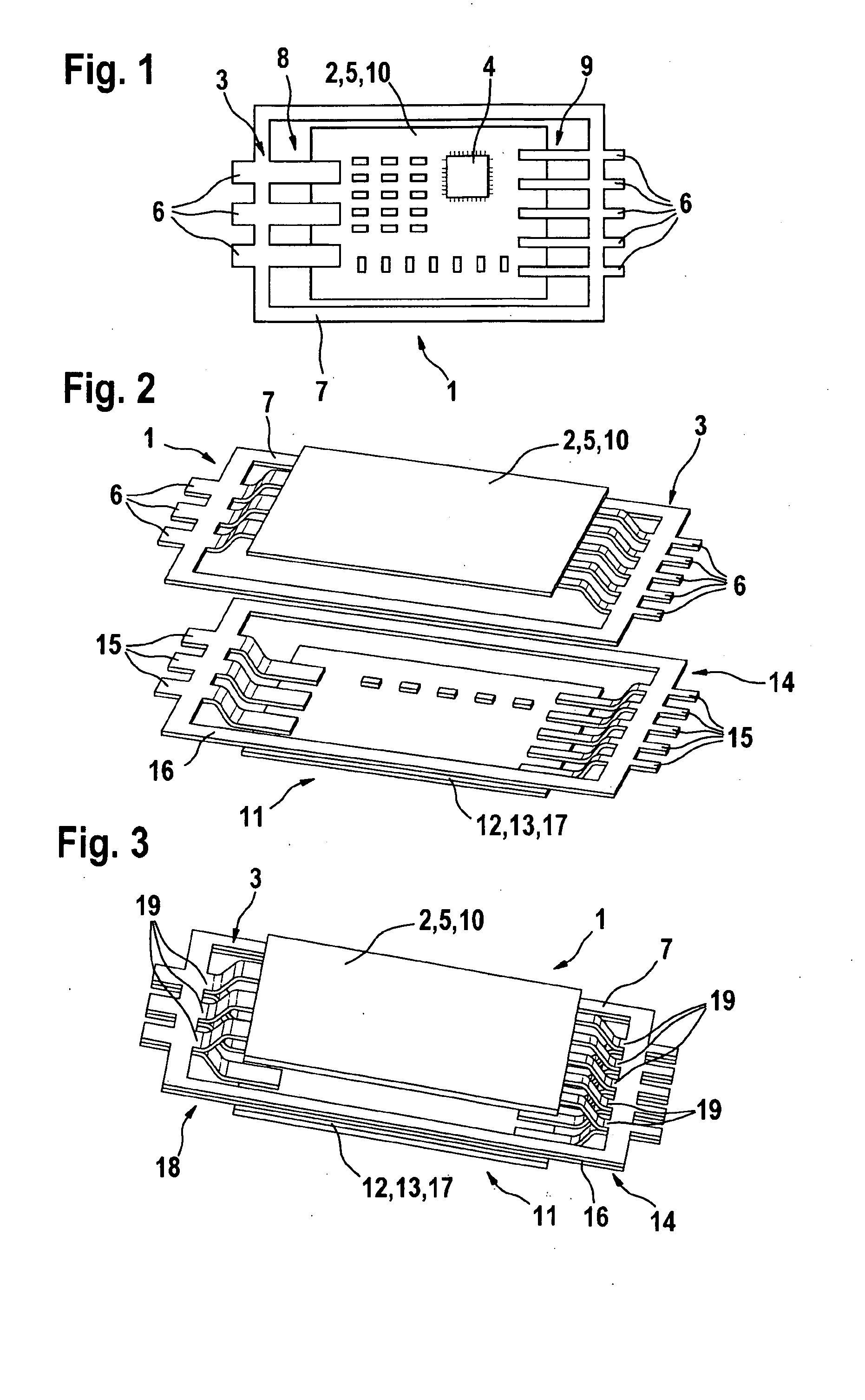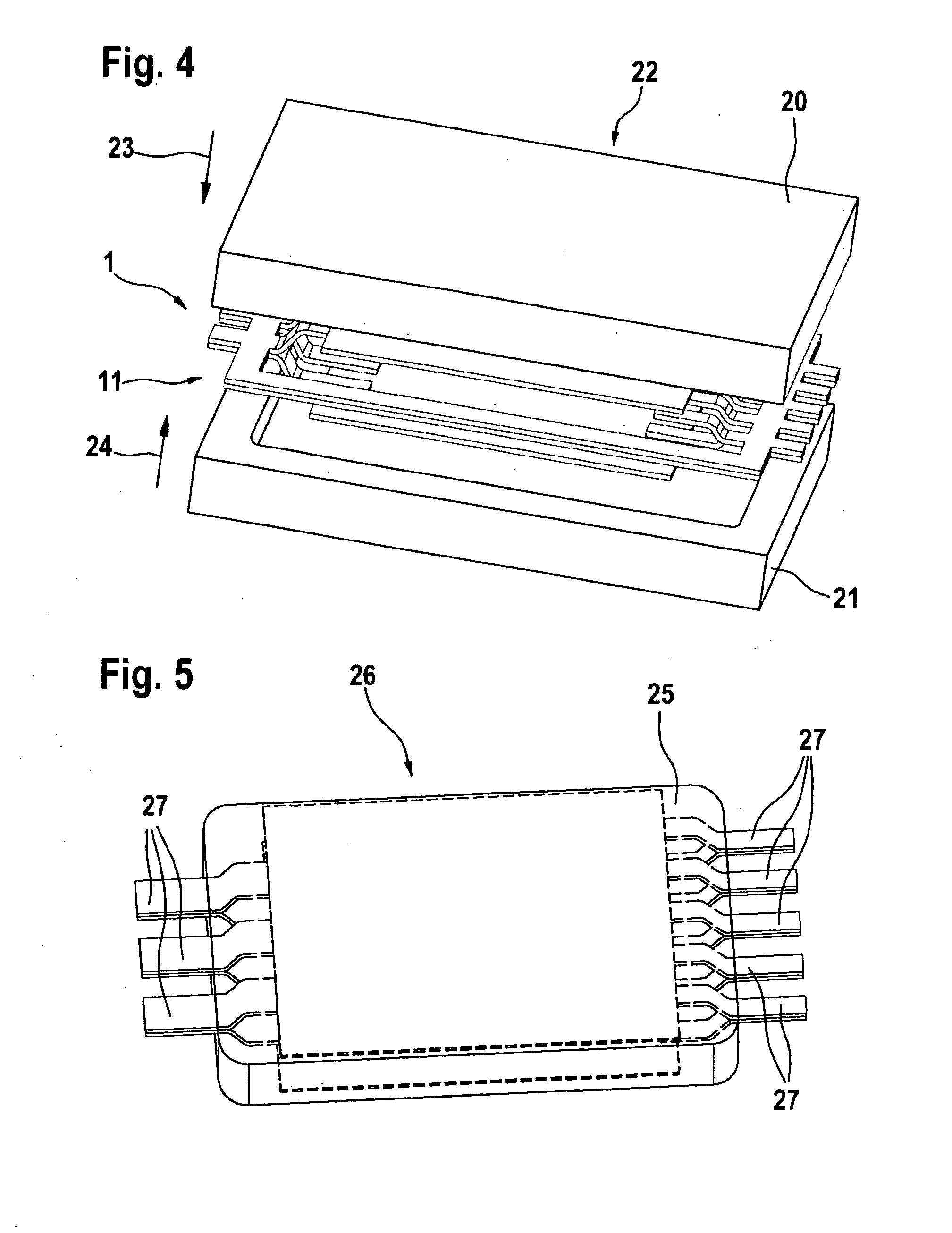Electronic module and method for manufacturing an electronic module
a technology of electronic modules and manufacturing methods, applied in the field of electronic modules, can solve the problems of reducing the number of manufacturing steps needed to manufacture electronic modules, and limiting the footprint of modules extrusion coated in this manner, and achieve the effect of increasing the component density in terms of the footprin
- Summary
- Abstract
- Description
- Claims
- Application Information
AI Technical Summary
Benefits of technology
Problems solved by technology
Method used
Image
Examples
Embodiment Construction
[0027]FIG. 1 shows a top view of a first structural unit 1, including a component-mounted first substrate 2 and a pressed screen 3. Substrate 2 has electronic components 4, only one of which is illustrated to simplify the representation. First substrate 2 is designed as a circuit board 5 having conductor tracks which are not illustrated. The conductor tracks are used to interconnect electronic components 4 within circuit board 5 and to provide contact surfaces for contacting first leads 6 of pressed screen 3. Explicitly illustrated component 4 is glued onto first substrate 2 and connected to the conductor paths (not shown) by bonding for the purpose of electrical contacting. Alternatively, electronic component 4 is glued onto first substrate 2. First pressed screen 3 has first leads 6 and a first additional structure 7 which connects first leads 6 and completely surrounds substrate 2 of finished structural unit 1. First leads 6 are situated within first structural unit 1 in such a w...
PUM
| Property | Measurement | Unit |
|---|---|---|
| electrical | aaaaa | aaaaa |
| mechanical | aaaaa | aaaaa |
| electrically | aaaaa | aaaaa |
Abstract
Description
Claims
Application Information
 Login to View More
Login to View More - R&D
- Intellectual Property
- Life Sciences
- Materials
- Tech Scout
- Unparalleled Data Quality
- Higher Quality Content
- 60% Fewer Hallucinations
Browse by: Latest US Patents, China's latest patents, Technical Efficacy Thesaurus, Application Domain, Technology Topic, Popular Technical Reports.
© 2025 PatSnap. All rights reserved.Legal|Privacy policy|Modern Slavery Act Transparency Statement|Sitemap|About US| Contact US: help@patsnap.com



